Singapore, in Southeast Asia, is a global, economic powerhouse with a population of a little less than 6 million people. It’s renowned for its cultural emphasis on excellence and its high-standard education system. Young Singaporeans are expected to lead their generation to a sustainable and prosperous future. This requires values, behaviors, and actions nested in a positive belief system characterized by self-awareness and self-confidence.
Halogen is an important non-profit organization – with a strong youth development ecosystem – that stewards youth development through curated programs. For a few years now, it has used Pointerpro to support its programs. Time for an interview with Impact & Development Executive Eunice Hoon.
In this article, we discuss the following with her:
The digital evolution of a youth development specialist since 2003
Hi Eunice, how would you describe Halogen and what the organization does?
We are a nonprofit institution of public character – founded in 2003 – that seeks to support youth from all walks of life to help them realize their fullest potential. Every young person has the intrinsic potential to create positive change in their community.
That’s why we provide them with leadership, entrepreneurship, mentoring, and incubation opportunities or programs. We help them build a strong foundation to lead themselves, lead others, and lead change.
Can you tell us a little bit more about Halogen’s programs and how they’ve evolved over the years?
Yes. For the past 20 years, much of our work has been centered on actively running workshops and programs for youth and educators. At this moment in time, and looking forward, our focus is expanding to centralizing our programs and trying to be more data-driven.
This will enable us to measure the impact of our programs on the ground and even evolve toward having a measurement platform. Ultimately this will allow us to come up with more and more relevant and timely programs that serve youth, not just in Singapore, but also in the broader ASEAN region.
Makes sense. Going digital to have even more impact. Can you tell us a little more about your own role?
I oversee a large portion of the research and the impact measurement work done at Halogen. I’m involved in benchmarking the youth that we serve in Singapore internally and expanding out in ASEAN.
My aim is to understand the important gaps we need to address. So, I evaluate our efforts and help the development and operations team at Halogen refine the various programs that we are running. That means I’m really getting feedback from the ground – but as we roll out more and more digital assessments, I also get to collect more and more data at once.
Halogen’s youth development frameworks and assessments
Before we dive deeper into the assessments, can you briefly explain the youth development frameworks at the core of them?
Sure. Through extensive research, we created our own “Attributes-Based Development Framework” as we call it. It helps us identify characteristics, mindsets, and skill sets that young people need, to succeed in specific contexts.
For those contexts, we create programs that get a young person to develop these attributes. And at the same time, we also measure their growth in these attributes.
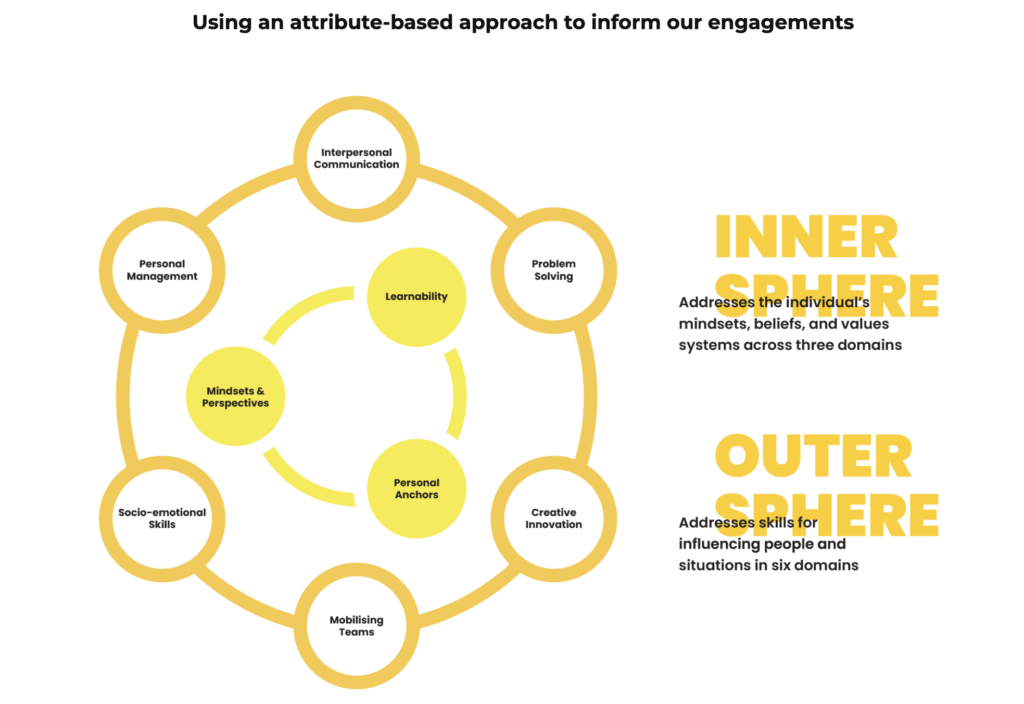
How did you apply these frameworks before you were using Pointerpro?
Before Pointerpro, we used other platforms to roll out our surveys.
But then, what was the shortcoming that eventually led you to Pointerpro?
At a certain point in time, as we were looking to expand and develop some of these attributes from our framework in our youth, we didn’t want to just assess them but wanted them to learn and develop an awareness of their competencies as well.
We at least wanted them to truly understand the attributes they personally need to develop most and prepare them to take ownership to start their process of learning and growing. So we explored the idea of getting them to take assessments and immediately letting them retrieve a personalized feedback report.
And none of the tools you had used offered that personalized report capability, I assume?
No indeed. First of all, we didn’t have the ability to create those personalized reports. But in fact, with these other tools we also faced other limitations with calculations and formulas. A lot just had to be done manually.
So, we actually also explored building our own custom platform – especially because we wanted to offer those personalized reports. However, it took up too many resources, and it was very difficult to manage. So we actively started looking for a more cost-effective manner and found Pointerpro.
The difference made by Pointerpro

80% of the people who completed those assessments went on to secure more work from us that directly connected with the subject matter of the assessment.
So, what does a typical Halogen assessment, built with Pointerpro, look like?
First of all, the process for our assessments usually begins with the selection of the attributes that we need to measure. This can depend on the stakeholders. We usually partner with schools or other organizations to narrow down and determine what the attributes of interest really are for the youth target audience in question.
Once we’ve nailed that down, we start building the assessment for them and then distribute it to the youths. What they get is a self-assessment with a broad range of questions that are associated with the different attributes.
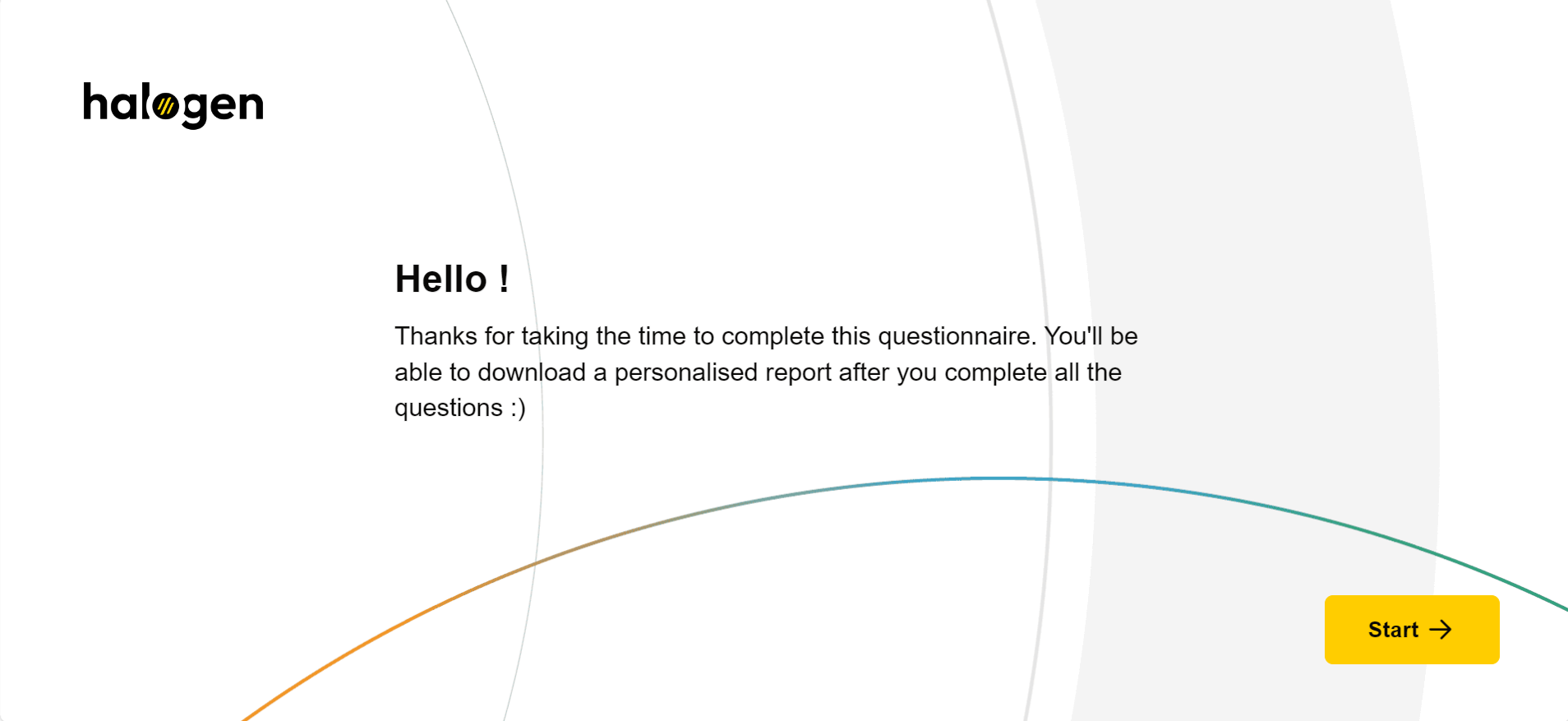
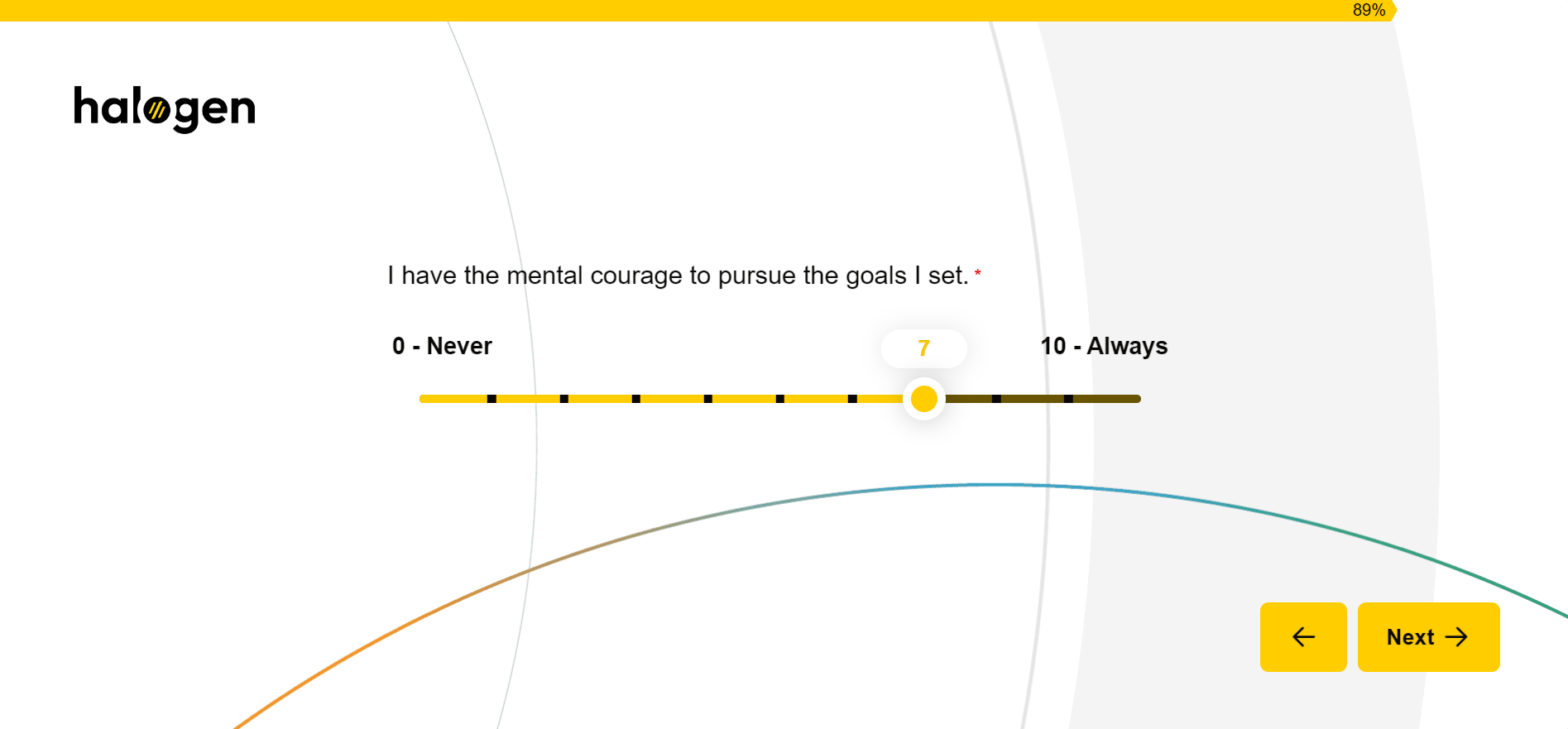

After completing the questionnaire, they immediately get to download a PDF report.
And how is the PDF report structured?
First of all, it reveals to them the attributes that they’ve just been assessed on. It also reveals their competency scores on there.
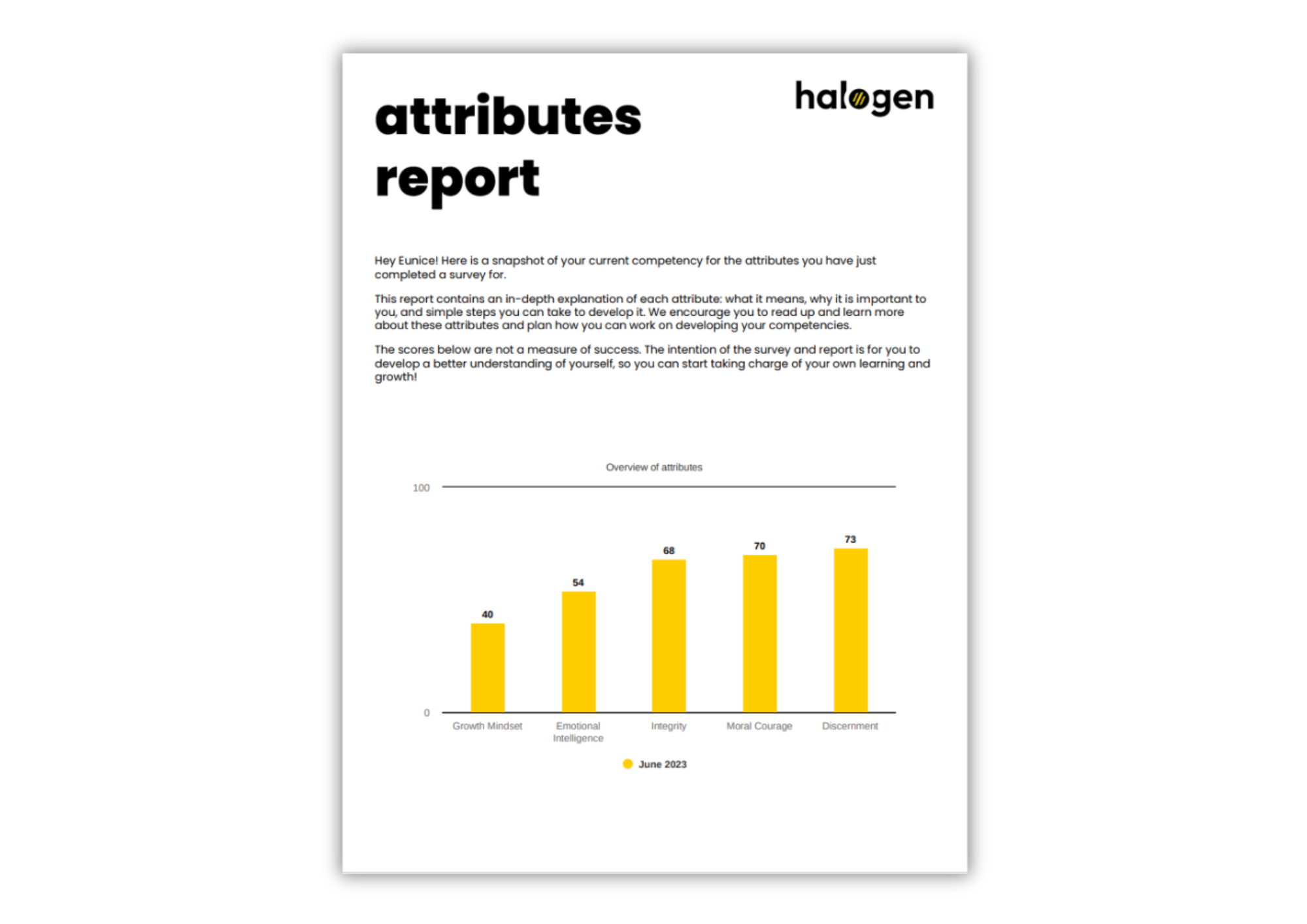
The rest of the report content is personalized, reflecting the respondent’s current competency levels, attribute per attribute. For each, it explains in more depth why it’s important to know their competency level, how their level stacks up against the average, and also what their competency level means for them in a practical sense.
To help them take ownership, we list concrete actions they should take and resources to help them grow.
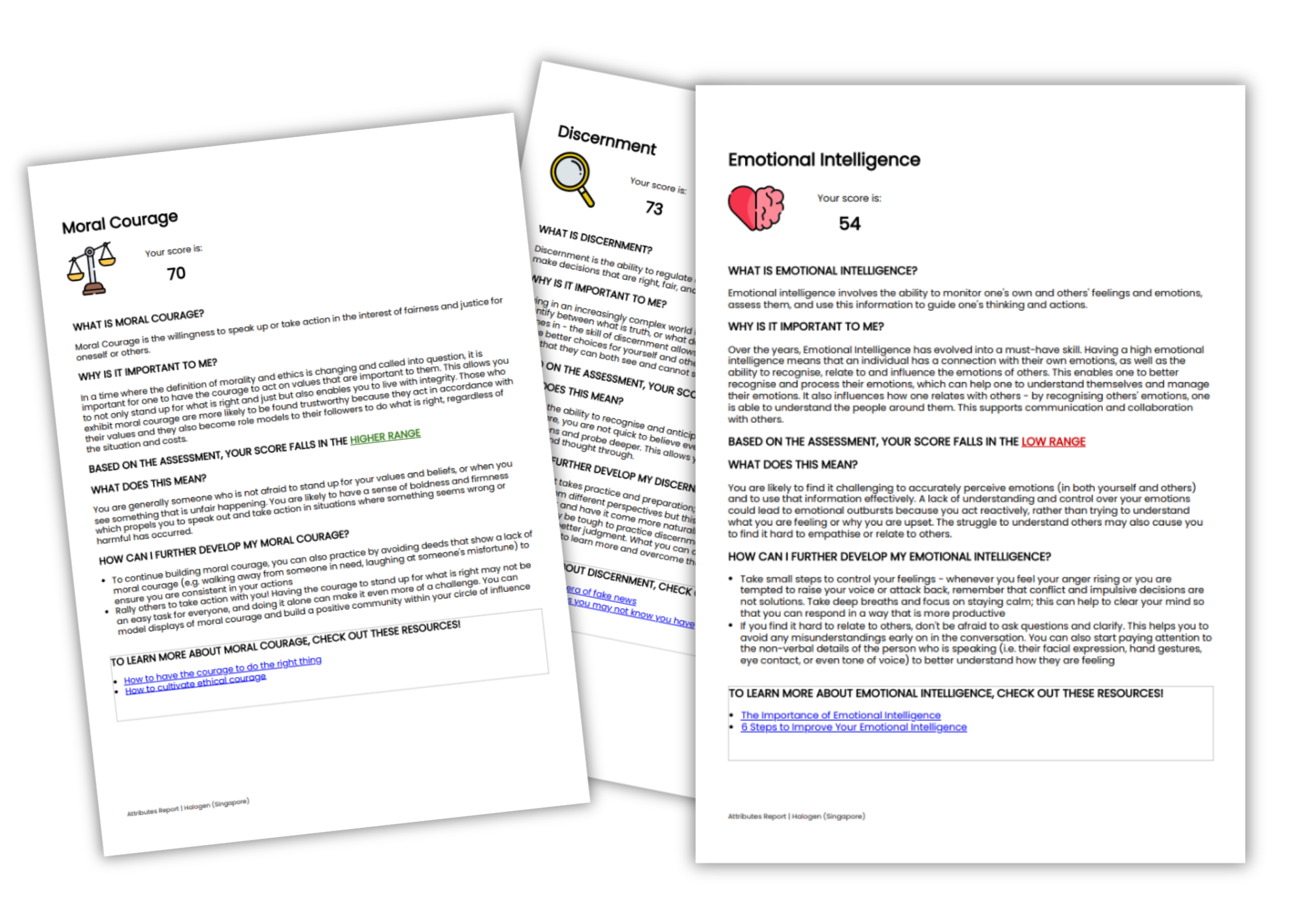
This is truly a solution that gets us to initiate real youth impact at scale. With these assessments, we were able to reach over 2000 youths with personalized feedback last year – via 11 different educational institutions or an independent initiative of our own.
Great! Do you administer follow-up assessments too?
Yes, it depends on the engagement we have in a project, but typically we always follow up with assessments afterward – if only to measure the impact our programs are actually having.
We usually do a “pre-survey” or “diagnostic assessment” – like the one I just mentioned – and a post-survey near the end of a program. The data I collect from these two time-points are very valuable to make the right analyses.
The user experience of Pointerpro
What has been your personal experience, building assessments and reports in Pointerpro?
In my experience, interface-wise, it’s very easy to navigate and also easy to build stuff. There are a lot of features that allow us to build pretty much anything we could want – and especially save time in the long run. I mean, having built-in formula logic and calculations saves me a lot of time when I need to do my analyses.
And then, obviously, the reports offer a lot of flexibility. We get to tailor and customize the design and branding in function of the different organizations we meet or work with. That’s so helpful.
What was your experience with our onboarding and customer service to learn using the tool? After all, it’s more than a simple survey tool.
I actually think the platform is quite intuitive. At least for me, it wasn’t too challenging.
But yeah, I do appreciate that it’s very easy to get help. I used the chat button multiple times and there was always someone who was able to answer my question and walk me through a solution.
Future youth empowerment initiatives with Pointerpro
Nice! Given you’re now both a Pointerpro and youth development specialist, are there any future plans worth sharing?
I think right now, our main goal is to distribute even more of these assessments because we realize the data we collect is so useful. So we’re mainly exploring other potential reports that would be useful as part of our programs, and that we could build and auto-generate with Pointerpro.
We also want to make things more exciting for the younger generation. Therefore, we want to use the design capabilities of Pointerpro to refine some of the looks of our reports.
But on top of that, we continue to think about further developing youth engagement with learning journeys. Things like scheduling follow-up assessments, and communicating more insights on the different attributes via email campaigns.
To finish up: Any tips for new or future Pointerpro users?
Well, I just remembered… Actually, what I learned so much from are the extensive help guide pages you have. The instructions are really clear, with screenshots and everything.
So that has been very useful to fall back on and in just helping me navigate the platform and the many different features. I really recommend people use this.
Thank you for this interview, Eunice.
You’re welcome!


